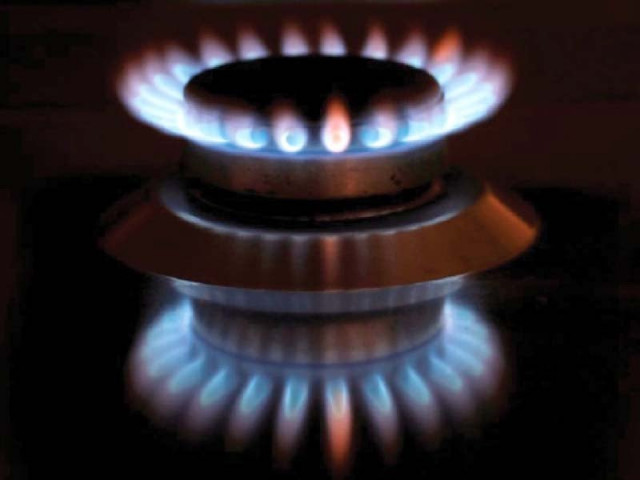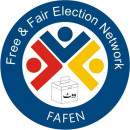Gas crisis looms as $1bn diverted to domestic sector
Expensive RLNG to be diverted to the domestic sector in a bid to alleviate the gas crisis

The gas sector braces for another blow as approximately $1 billion is earmarked for diverting expensive RLNG to the domestic sector in a bid to alleviate the gas crisis anticipated in the fiscal year 2024-25.
State-owned oil and gas entities are already staggering under the weight of a circular debt amounting to Rs710 billion, primarily due to the supply of RLNG.
Pakistan LNG Limited (PLL) shoulders a circular debt of Rs142 billion, while Pakistan State Oil (PSO) grapples with Rs568 billion, all stemming from the supply of RLNG to state-owned gas utilities.
The revelation comes from key stakeholders, the All Pakistan Textile Mills Association North region, who assert that the diversion of RLNG to domestic consumers is poised to incur a staggering cost of $1 billion in FY 24-25, accounting for 209 MMCFD (million cubic feet per day).
The gas utility SNGPL had projected 80,155 BBTU RLNG diversion to system gas consumers in FY 2024-25 at a cost of Rs297,913 million which amounted to $1 billion, approved by ECC and ratified by the federal cabinet.
The circular debt in RLNG was going on the rise due to the non-implementation of the weighted average cost of gas.
PTI government had approved a bill of weighted average cost of gas from parliament but it was challenged in the Sindh High Court.
The oil and gas regulatory authority (Ogra) has implemented the weighted average cost of gas partially but it was not fully implemented. Therefore, an amount of one billion dollars would either be recovered from the consumers or it will be parked in circular debt.
SNGPL is seeking a massive increase in gas prices to be implemented from July 1, 2024. The Ogra will conduct a public hearing on Monday to consider an increase in gas prices.
Read also: APTMA wants gas market deregulation
A body of textile millers-APTMA in its comments submitted to Ogra said that gas prices have been hiked again to Rs2,750/MMBtu—an increase of 223% since January 2023.
The petitioner has projected an aggregate average prescribed price (Rs/MMBtu) of Rs4,446.89, with the price for all consumers at Rs4,501.33, effective from July 1, 2024.
It said that grid electricity tariffs are approximately 17.5 cents/kWh and are increasing with no end in sight.
As such, there is no financially viable source of energy for firms to manufacture with and be able to compete in international markets,” textile millers said adding that tariffs in Pakistan stand as some of the highest in the region.
However, these elevated tariffs pose significant risks to national security by impeding industrial growth, reducing competitiveness, and increasing dependence on imports and aid,” textile millers said.
Particularly for manufacturing, which heavily relies on energy, soaring operational costs due to high tariffs result in increased consumer prices and trigger de-industrialisation.
Sectors like textiles face mounting challenges, with elevated electricity and gas prices affecting both production costs and consumer prices. The practice of cross-subsidising natural gas and electricity for the residential sector at the expense of industries exacerbates the problem.
To maintain optimal tariffs, the federal government must peg industrial tariffs to OGRA’s prescribed price, thereby setting a benchmark and insulating tariffs from inefficiencies in the power sector,” textile millers added.
LPG Air Mix, priced at around $33 per MMBtu, is sold as natural gas (SNG) at PNG domestic consumer prices, resulting in a significant shortfall that industrial consumers cross-subsidise.
Read: Gas becomes a rarity in Ramazan
However, the high initial investment for infrastructure may not be recoverable through sales, and ongoing depreciation and maintenance costs further burden industrial consumers.
Domestic sector consumption in both Sui Southern Gas Company Ltd. (SNGPL) network increased by more than 4%, from 310 BCF in FY 2022 to 323 BCF in FY 2023 with the highest UFG rates and cost of service.
The petition mentions an anticipated further decline of 12% in SNGPL's indigenous gas production with increased sales to the domestic sector.
Only 28% of the country's population is served by gas, both indigenous and imported, with a diversion of over 200 MMCFD of RLNG carrying a price tag of $1 billion.
Gas appliance efficiency in the domestic sector of Pakistan is one of the lowest globally, wasting scarce resources for decades at $1-3 per MMBtu.
Captive at $11.7 remains a key issue, adding economic value to gas and boosting exports,” Millers said and pointed out that the gas sector faces numerous challenges, including high unaccounted-for gas (UFG) rates, inadequate infrastructure, and inefficient gas appliance usage in the domestic sector.
Market deregulation can foster competition and innovation, while administrative pricing set by the federal government should be revised to prevent rent-seeking behaviour and ensure efficient resource allocation,” textile millers said.
Addressing Pakistan's energy tariff challenges requires a multifaceted approach, including tariff rationalisation, promotion of alternative energy sources, and reforms in the gas sector. By implementing these measures, Pakistan can achieve a more sustainable and efficient energy ecosystem while fostering economic growth and competitiveness,” APTMA added.



















COMMENTS
Comments are moderated and generally will be posted if they are on-topic and not abusive.
For more information, please see our Comments FAQ